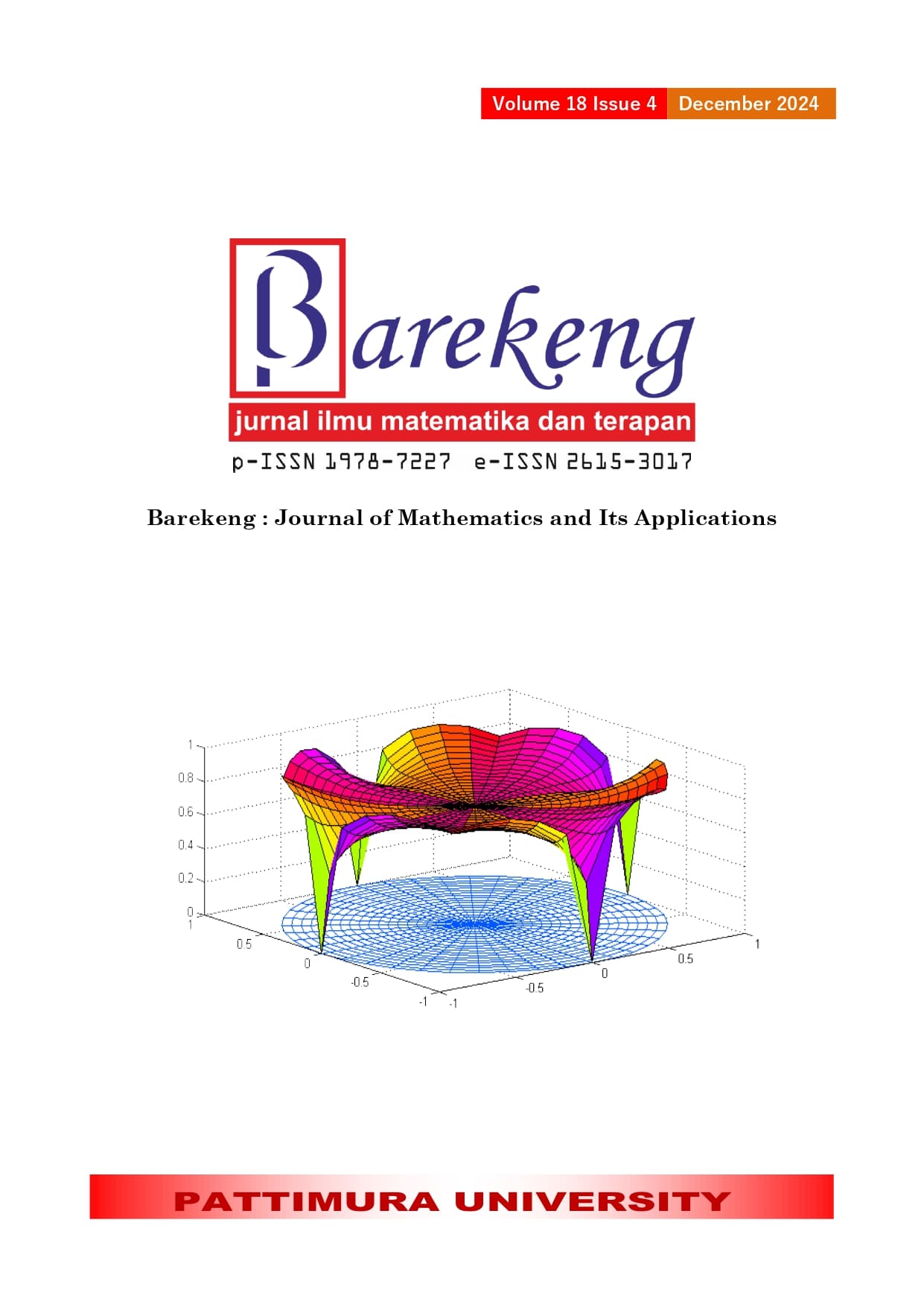INTEGRATED FORECASTING AND AGGREGATE PLANNING FOR PRODUCTION OPTIMIZATION: A COMPARATIVE ANALYSIS OF OVERTIME AND SUBCONTRACTING CONTROLS
Abstract
The current potential market demand with ever-changing situations and conditions must be managed properly to find out the potential market demand in the future. Rumah Warna Yogyakarta is one of the manufacturing industry players that has experienced fluctuations in market demand, even tending to decline from the end of 2021 to mid-2022. Data was obtained from the database and direct interviews with Rumah Warna in Yogyakarta from November 2021 to November 2022. This study aims to determine the prediction of product demand for Rumah Warna Yogyakarta in the next period, so that companies can carry out production planning strategies to minimize production cost. Product demand prediction is carried out using the Grey System method of the GM (1,1) model. Then proceed with the heuristic aggregate planning method that focuses on overtime control and subcontracting control. Based on the results of the analysis, the Grey System GM (1,1) method produces good prediction accuracy of 9.231%. The best aggregate planning method is the overtime control where Rumah Warna Yogyakarta can reduce costs by Rp 351,258,758 when compared to the subcontracting control method.
Downloads
References
D. Lukisari, “Studi Tentang Kebijakan Upah Minimum Regional di Propinsi Jawa Tengah,” JKAP J. Kebijak. Dan Adm. Publik, vol. 3, no. 2, Art. no. 2, Dec. 2015, doi: 10.22146/jkap.8477.
R. Álvarez and R. Fuentes, “Minimum Wage and Productivity: Evidence from Chilean Manufacturing Plants,” Econ. Dev. Cult. Change, vol. 67, no. 1, pp. 193–224, Oct. 2018, doi: 10.1086/697557.
R. Croucher and M. Rizov, “The Impact of the National Minimum Wage on Labour Productivity in Britain”.
M. A. Arham and S. Junus, “Contributing factors of labor productivity in the industrial sector in Indonesia: a comparative study among regions,” J. Perspekt. Pembiayaan Dan Pembang. Drh., vol. 8, no. 3, pp. 277–286, Aug. 2020, doi: 10.22437/ppd.v8i3.9626.
“PENGARUH AKTIVITAS DAN PROFITABILITAS YANG MEMPENGARUHI KINERJA KEUANGAN PADA PERUSAHAAN SUB SEKTOR TEKSTIL DAN GARMEN YANG TERDAFTAR DI BURSA EFEK INDONESIA (BEI) PERIODE 2016 - 2021 | Jurnal Ilmiah Hospitality,” Nov. 2023, Accessed: Feb. 09, 2024. [Online]. Available: https://stp-mataram.e-journal.id/JIH/article/view/2285
T. Krishnan, A. Khan, and J. Alqurni, “Aggregate Production Planning and Scheduling in the Industry 4.0 Environment,” Procedia Comput. Sci., vol. 204, pp. 784–793, Jan. 2022, doi: 10.1016/j.procs.2022.08.095.
I. Setiawan, N. Nurdiansyah, M. Tosin, V. Lusia, and M. Wahid, “Aggregate Planning Implementation for Planning and Controlling The Materials in The Beverage Packaging Industry,” Spektrum Ind., vol. 20, no. 1, Art. no. 1, Apr. 2022, doi: 10.12928/si.v20i1.25.
M. D. Kartikasari and N. Hikmah, “Decomposition Method with Application of Grey Model GM(1,1) for Forecasting Seasonal Time Series,” Pak. J. Stat. Oper. Res., pp. 411–416, Jun. 2022, doi: 10.18187/pjsor.v18i2.3533.
F. A. Arsy, “Demand Forecasting of Toyota Avanza Cars in Indonesia: Grey Systems Approach,” Int. J. Grey Syst., vol. 1, no. 1, pp. 38–47, Jul. 2021, doi: 10.52812/ijgs.24.
S. M. Ahmed, T. K. Biswas, and C. K. Nundy, “An optimization model for aggregate production planning and control: a genetic algorithm approach,” Int. J. Res. Ind. Eng., vol. 8, no. 3, Sep. 2019, doi: 10.22105/riej.2019.192936.1090.
M. Effendi, H. Tunjang, D. R. Hidayat, and I. Karuehni, “Analysis Of Aggregate Planning To Streamline Production Cost In The Mahakam Ice Crystal Home Industry In The City Of Palangka Raya:,” J. Manaj. Sains Dan Organ., vol. 4, no. 1, Art. no. 1, Apr. 2023, doi: 10.52300/jmso.v4i1.5200.
A. Cheraghalikhani, F. Khoshalhan, and H. Mokhtari, “Aggregate production planning: A literature review and future research directions,” Int. J. Ind. Eng. Comput., pp. 309–330, 2019, doi: 10.5267/j.ijiec.2018.6.002.
“MODEL PERENCANAAN AGREGAT UNTUK SISTEM PRODUKSI DUA TAHAP PADA INDUSTRI PANGAN DENGAN BAHAN PERISHABLE,” J. Teknol. Ind. Pertan., pp. 34–45, Apr. 2021, doi: 10.24961/j.tek.ind.pert.2021.31.1.34.
“Aggregate planning and forecasting in make-to-order production systems - ScienceDirect.” Accessed: Feb. 10, 2024. [Online]. Available: https://www.sciencedirect.com/science/article/abs/pii/S0925527315002078
E. Demirel, E. C. Özelkan, and C. Lim, “Aggregate planning with Flexibility Requirements Profile,” Int. J. Prod. Econ., vol. 202, pp. 45–58, Aug. 2018, doi: 10.1016/j.ijpe.2018.05.001.
C.-N. Wang, T.-T. Dang, N.-A.-T. Nguyen, and T.-T.-H. Le, “Supporting Better Decision-Making: A Combined Grey Model and Data Envelopment Analysis for Efficiency Evaluation in E-Commerce Marketplaces,” Sustainability, vol. 12, no. 24, Art. no. 24, Jan. 2020, doi: 10.3390/su122410385.
“The analysis of GM (1, 1) grey model to predict the incidenc... : Medicine.” Accessed: Feb. 09, 2024. [Online]. Available: https://journals.lww.com/md-journal/fulltext/2018/08240/the_analysis_of_gm__1,_1__grey_model_to_predict.17.aspx
A. Ahdika, “Model Grey (1,1) dan Grey-Markov pada Peramalan Realisasi Penerimaan Negara,” J. Fourier, vol. 7, no. 1, Art. no. 1, Apr. 2018, doi: 10.14421/fourier.2018.71.1-12.
H.-S. Dang, Y.-F. Huang, C.-N. Wang, and T.-M.-T. Nguyen, “An Application of the Short-Term Forecasting with Limited Data in the Healthcare Traveling Industry,” Sustainability, vol. 8, no. 10, Art. no. 10, Oct. 2016, doi: 10.3390/su8101037.
T. Trimono, A. Sonhaji, and U. Mukhaiyar, “FORECASTING FARMER EXCHANGE RATE IN CENTRAL JAVA PROVINCE USING VECTOR INTEGRATED MOVING AVERAGE,” MEDIA Stat., vol. 13, no. 2, pp. 182–193, Dec. 2020.
Copyright (c) 2024 Sukma Anindita, Rahmadi Yotenka

This work is licensed under a Creative Commons Attribution-ShareAlike 4.0 International License.
Authors who publish with this Journal agree to the following terms:
- Author retain copyright and grant the journal right of first publication with the work simultaneously licensed under a creative commons attribution license that allow others to share the work within an acknowledgement of the work’s authorship and initial publication of this journal.
- Authors are able to enter into separate, additional contractual arrangement for the non-exclusive distribution of the journal’s published version of the work (e.g. acknowledgement of its initial publication in this journal).
- Authors are permitted and encouraged to post their work online (e.g. in institutional repositories or on their websites) prior to and during the submission process, as it can lead to productive exchanges, as well as earlier and greater citation of published works.






1.gif)



